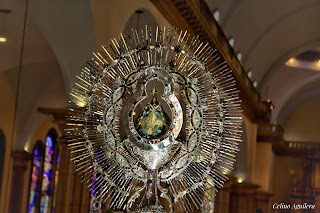
 On August 27,
1882, the government presided by Marco Aurelio Soto decided to leave a legacy
of sculptural works in the city that, apart from embellishing it, became the
tribute that the country made to its illustrious men. In addition to the bronze
statue of the paladin Francisco Morazan stood out the one of José Cecilio del
Valle, the busts of José Trinidad Cabañas and José Trinidad Reyes and the group
of the Four Seasons that stood in the Central Park. The monument of Francisco
Morazán was erected in 1883, but it was thanks to the fact that on August 27,
1882 the contract signed by Ramón Rosa was made for these works, in which
32,000 Central American pesos were invested, "said Carlos Turcios,
Director of the Casa de Morazán Museum. The date is a reason for celebration
and this venue to celebrate this event will offer a conference on the subject.
It was reported that the exhibition will be held next Wednesday and will be in
charge of the historian Rafael Leiva Vivas, who has been responsible for
distorting based on facts the doubts that the statue that looks in the central
square belongs to the hero. Converted into a kind of black legend, Gabriel
García Márquez repeated the false argument of Morazán's enemies. With his
delirium of the magic word and highlighting the mysteries of the imagination he
related that "the monument to General Francisco Morazán, erected in the
main square of Tegucigalpa, is actually a statue of Marshal Ney, bought in
Paris in a repository of used sculptures."
On August 27,
1882, the government presided by Marco Aurelio Soto decided to leave a legacy
of sculptural works in the city that, apart from embellishing it, became the
tribute that the country made to its illustrious men. In addition to the bronze
statue of the paladin Francisco Morazan stood out the one of José Cecilio del
Valle, the busts of José Trinidad Cabañas and José Trinidad Reyes and the group
of the Four Seasons that stood in the Central Park. The monument of Francisco
Morazán was erected in 1883, but it was thanks to the fact that on August 27,
1882 the contract signed by Ramón Rosa was made for these works, in which
32,000 Central American pesos were invested, "said Carlos Turcios,
Director of the Casa de Morazán Museum. The date is a reason for celebration
and this venue to celebrate this event will offer a conference on the subject.
It was reported that the exhibition will be held next Wednesday and will be in
charge of the historian Rafael Leiva Vivas, who has been responsible for
distorting based on facts the doubts that the statue that looks in the central
square belongs to the hero. Converted into a kind of black legend, Gabriel
García Márquez repeated the false argument of Morazán's enemies. With his
delirium of the magic word and highlighting the mysteries of the imagination he
related that "the monument to General Francisco Morazán, erected in the
main square of Tegucigalpa, is actually a statue of Marshal Ney, bought in
Paris in a repository of used sculptures."
Over the years this fantasy was taking the form of a
hypothetical truth and has been repeated with disregard and ridicule, only
comparable to the false identity that is attributed to the Central American
peoples and the exhibitionist desire to compare reality with caricature. Rafael
Leiva Vivas, author of the book "La Estatua de Morazán", from which
the data we transcribed has been removed, verified the authenticity of the
statue, and explained to LA TRIBUNA that finding the information took him about
two years, in the archives diplomats of Paris.
If you want to learn and read more: http://www.elheraldo.hn/tegucigalpa/906819-466/es-la-estatua-de-francisco-moraz%C3%A1nhttp://www.elheraldo.hn/tegucigalpa/906819-466/es-la-estatua-de-francisco-moraz%C3%A1n











